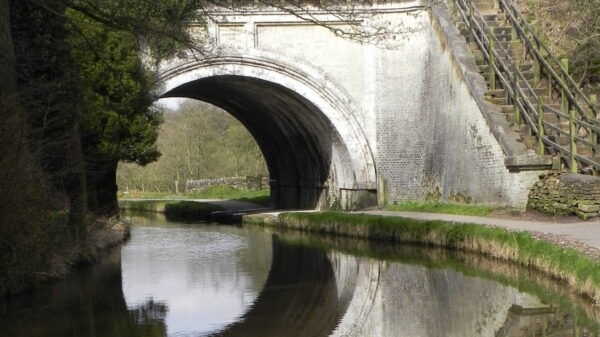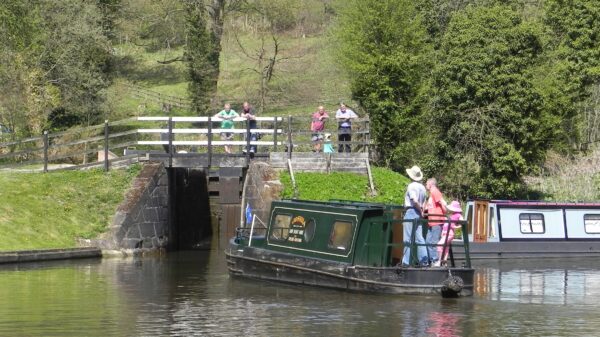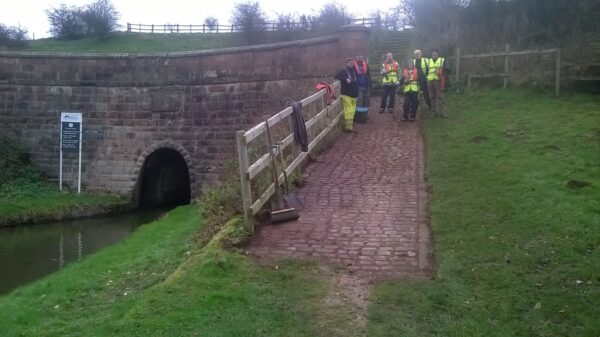1. Holly Bush Inn
Standing on the canal towpath with the Holly Bush pub behind you, turn to the right and walk along the Caldon Canal towpath. Look out for the replica milepost, replaced in the 1980s by the then Caldon Canal Society (now Caldon & Uttoxeter Canals Trust).
As the canal starts to turn to the right, you will see straight ahead of you the bottom of the staircase flight of locks which was the middle of the 3 arrangements of the canal in this area. There is often an historic narrow boat moored half way into the lock chamber, which is all that remains in water.
The woods beyond are Hazelhurst Wood, an ancient woodland which gave its name to the original staircase and hence the modern replacements further on the walk.




